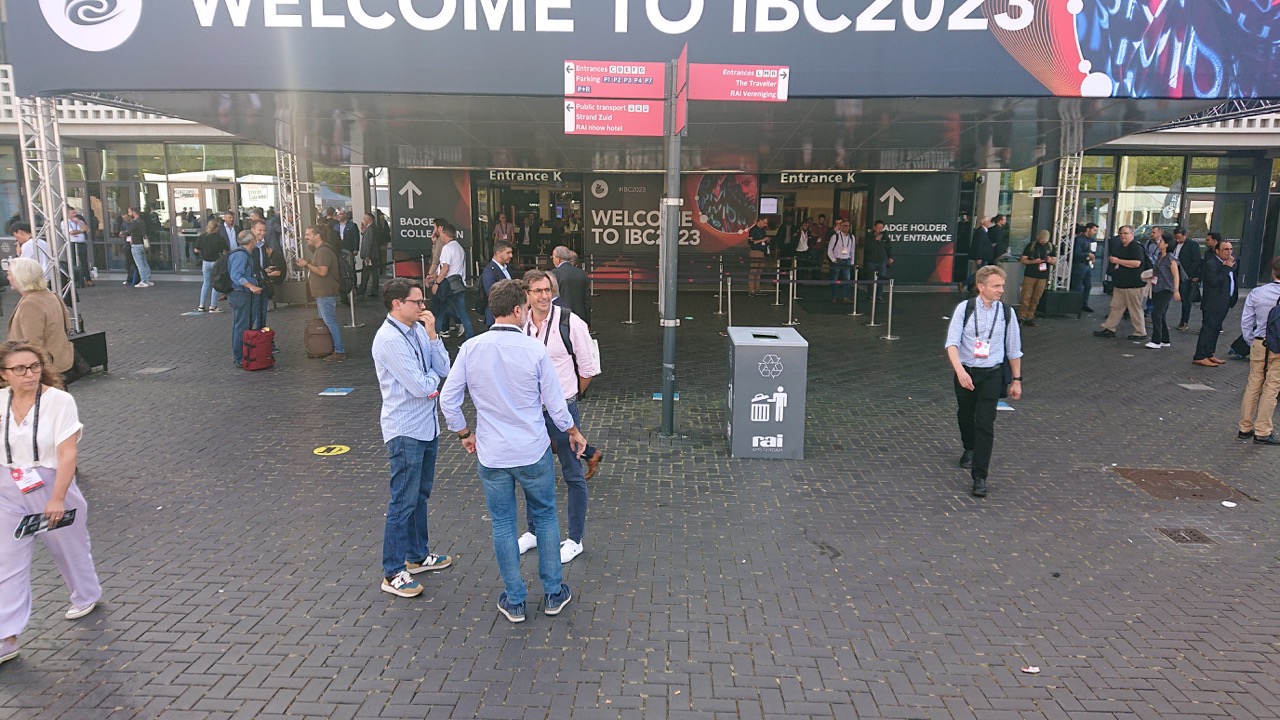
Strolling around the halls of IBC, it’s easy to forget that each one of the humming, blinking boxes of tricks on display has been the target of a huge amount of hard work by dedicated teams of people, many of whom probably sweated bullets and worked 36-hour days to get the widgetry up to spec for the show. As such, it seems a little mean to concentrate entirely on one product for a daily roundup like this one, but in a way, that’s kind of what we’re going to do.
Considering that Unreal Engine wasn’t really made for film and TV and costs nothing (assuming you don’t start shipping a lot of software that includes it), it’s had a pretty enormous impact on the industry. Still, HP are here in Amsterdam, showing off a range of new workstations, each shown running one of the media production world’s killer apps. At the front of the booth sat an enormous HP Z workstation running the Unreal editor, with, inevitably, a message about the lighting needing to be rebuilt because when does the lighting not need to be rebuilt in Unreal?
Well, perhaps that’s a bit unfair; recent additions to Unreal Engine have given us far better-behaved lights. The scene we see here is perhaps pretty typical of the kind of thing virtual production is popularly assumed to mean; a mountainous landscape with spectacular snow-capped peaks. It’s all very pretty, although it’s probably just as likely that “virtual production” in the modern sense might mean an ascetic live sports or news studio – not the sort of digital Bob Ross inspiration we see here.
But Unreal Engine can turn its virtual hand to even more abstract tasks. Verso Live is newly hatched, with a website that describes the company as “at the start of its journey.” The organization spun off from a provider of on-screen graphics, which used the forerunner of Verso Live internally, The titular software product is a set of tools – an interface or wrapper, if you like – around Unreal, intended to allow it to behave as a rendering engine for realtime animated graphics such as those used during sports broadcasts.
In the past, this sort of text has been rendered either with fantastically expensive custom software or, for lower-end users, software as elementary as the layout engine of a web browser. It’s convenient to be able to have anyone with web coding experience start creating graphics layouts, but the 3D capabilities were naturally limited. Meanwhile, anyone who’s used Video Copilot’s Element 3D plugin for After Effects will be aware of the enormous performance of modern GPUs, as well as the fact that they’re perfectly capable of creating glitch-free, broadcast-quality results, given a little care.
What’s at least as impactful, at least on a wider scale, is the idea of creating custom toolsets to interact with Unreal Engine. To an extent, this is what’s been done by ILM with its StageCraft, for traditional virtual-environment work. It’s not hard to see a need for something like that for conventional virtual production, if only so that a cinematographer’s demand for half a stop less from a light without anyone needing to get out a calculator.
With Unreal in mind, lots of companies are exhibiting LED video wall panels, with or without the accompanying processor, which is where a lot of the cleverness actually lies. Just a few offered something very VP-specific, though, and very helpful.
“We’re not a lighting manufacturer,” said one representative, which was odd because the company pretty definitely is a lighting manufacturer.
It’s possibly the second or third company, after Kino-Flo at the BSC show in London and then Roe at NAB, to show an LED video panel with a white emitter intended to achieve improved colour quality when used to cast light on the scene in front of it.
As the images accompanying this article attest (and as we knew anyway), adding a single, phosphor-converted white emitter to any sort of colour-mixing LED setup improves the colour quality vastly. Light an orange with such a light, and it looks orange. Light an orange with solely a mixture of red, green and blue LEDs, and it looks neon red. InfiLED’s work solves that handily, just as the white emitter makes colour-mixing movie lights workable.
And yes, you can display Unreal Engine graphics on them, at which point the software’s implementation of OpenColorIO is likely to come in handy since it isn’t necessarily obvious how to sensibly drive a video display panel incorporating RGB plus white emitters.
There’s a general feeling that virtual production overall is consolidating into something a bit more everyday, a bit more regularised than it has been. Such a rickety stack of technology perhaps won’t ever be exactly plug-and-play, but the emergence of such task-specific devices as InfiLED’s RGBW panels suggests at least the first signs of maturity. What that means for the wider business situation as regards to virtual production remains to be seen. Even before the strikes shut down a lot of world production, there had been some hints of over-provision and the potential for a bit of rationalization.
The question of exactly how far business can and will recover when everyone’s back at work will have to wait, meanwhile, until that actually happens.
